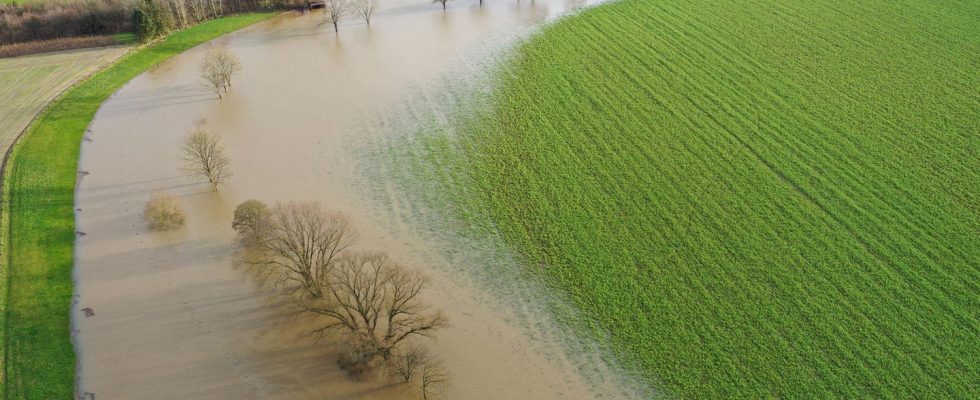Drought despite constant rain?
Groundwater levels in Germany are rising – but not sufficiently everywhere
Continuous rain causes rivers and streams to overflow their banks, like here near Albersloh in North Rhine-Westphalia: groundwater levels have also recovered this year.
© agrarmotive / Imago Images
Thanks to all the rain, the drought situation in Germany will ease in 2023, according to the Helmholtz Center for Environmental Research. However, the experts have not given the all-clear – in one region in particular, the soil is still too dry.
After several exceptionally dry years, the soil and groundwater levels have declined Germany recovered again this year. It was a good year for the water balance, said Andreas Marx, head of the drought monitor at the Helmholtz Center for Environmental Research (UFZ) in Leipzig. The heavy rain meant that 2023 was not a pronounced drought year. Over the past winter, the groundwater levels recovered well after the very dry years since 2018.
The soil is currently soaking wet to a depth of 60 centimeters, says Marx. In Lower Saxony and North Rhine-Westphalia, the soil at a depth of up to two meters is as wet as it is statistically only every ten years. In eastern Germany, especially in Brandenburg, Saxony and the north of Saxony-Anhalt, groundwater levels also rose. But it hasn’t rained enough for the levels to be back to normal, says Marx.
This is how the Helmholtz Center calculates the drought factor
From drought say scientists when the soil is drier than is statistically expected. At the Helmholtz Center’s monitor, scientists go back to 1951 and then compare the period up to 2015 with the current situation. “We have been experiencing below-average rainfall for several years,” explained Andreas Marx at the end of September. “At the same time, we had three years of extreme heat waves. This meant that in the last five years the soils in Germany were significantly drier than normal. The extraordinary thing about it: In some regions, the soils are over five to great depths We haven’t been able to get out of the drought for years.”
Despite the improved drought situation, the dry years could still cause further damage, said Marx. In the years since 2018, Germany has found itself “in a completely new situation” that has not yet resolved itself in the East: “In 2018, major damage was caused across the board in agriculture in Germany. In the following years, it was less severe. Also in forestry “It all started in 2018. Because of the drought and the mild winters, the beetles have multiplied significantly in the German forests. The foresters fear that the forest dieback will continue in 2023,” said Andreas Marx.
Christmas floods
The flood situation is easing to some extent – the risk of heavy rain is increasing again
Even if the drought situation in Germany has improved, global warming is likely to continue unabated. That’s how he put it The German Weather Service (DWD) found that 2023 was the warmest year in Germany since records began in 1881. The average temperature is expected to be 10.6 degrees, a DWD spokesman said on Wednesday, five days before the end of the calendar year.
Sources: dpa / Interview with Andreas Marx on helmholtz.de


